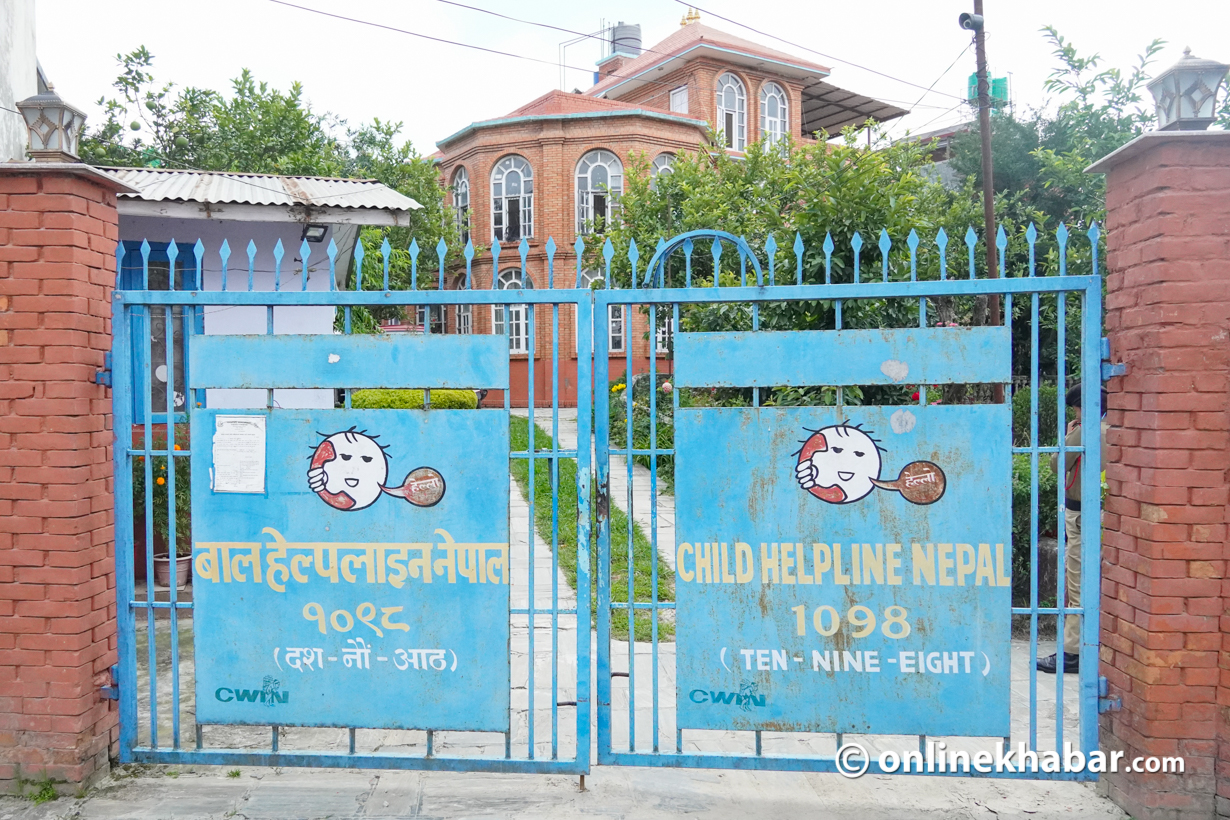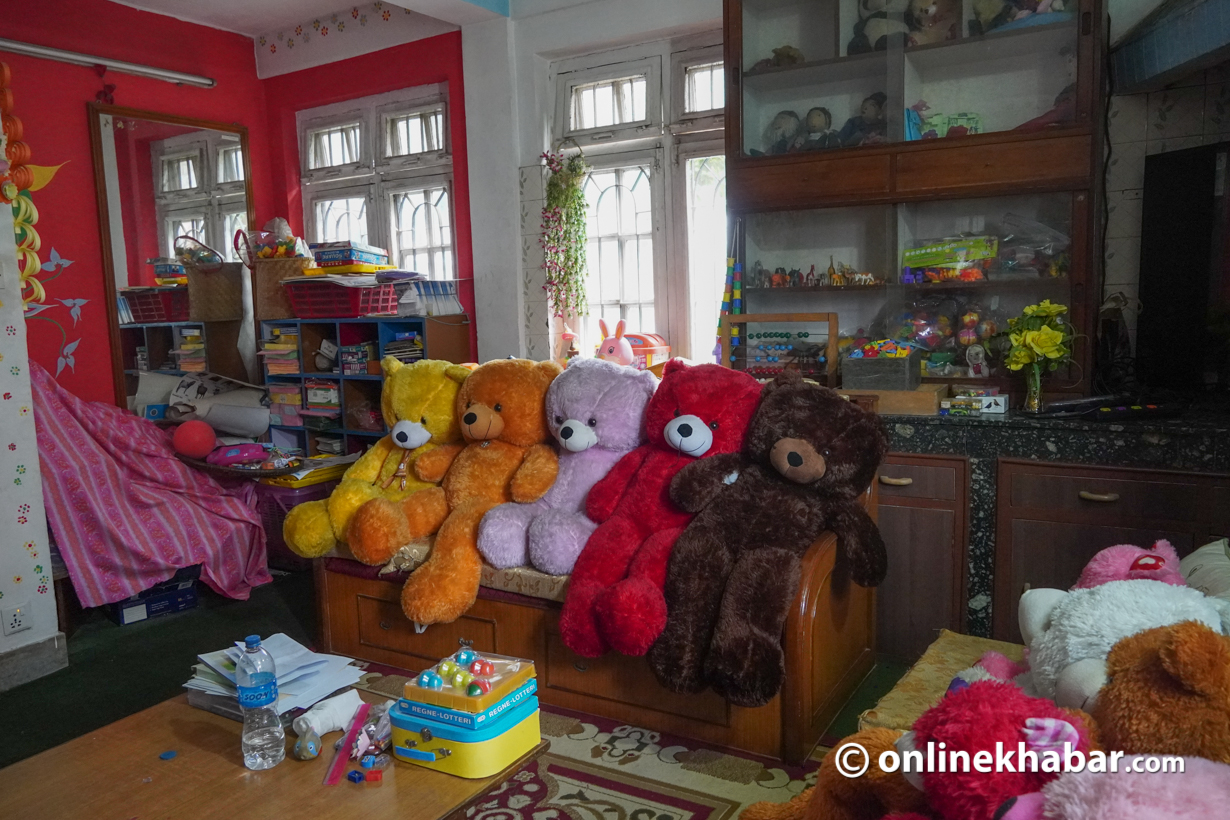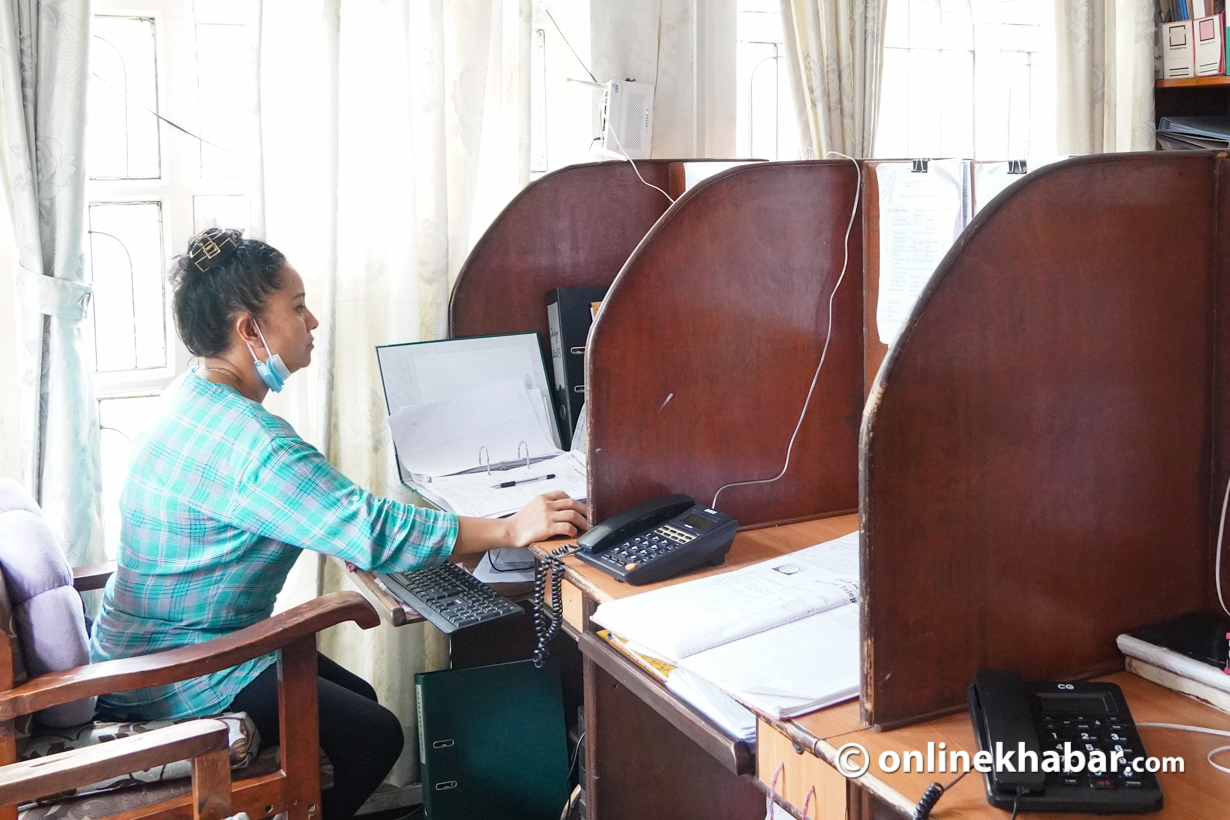
As I entered the office of Child Helpline Children Workers in Nepal (CWIN), Tinthana, Kathmandu on a hot day, I saw Nanu Shrestha responding to a call for help. Shrestha who has been working here as a call respondent for the last 10 years responds to almost 40 calls per day. All her calls are related to problems faced by children.
Shrestha responded to the caller, a mother of an eight-day-old infant, seeking food assistance on that day. She responded to the call with humility and referred her problem to the Kathmandu metropolitan city office, which had recently taken the initiative to solve problems related to food for children.
“Currently we are short of budget. This is why whenever we get calls from mothers needing food assistance, we refer them to the city. A while back, we gave out food from CIWN itself,” she says.
The mother was not understanding what Shrestha was telling her. However, she took time and explained to her what she needed to do and how she could get food for her baby. It was quite amazing to witness the importance of a child helpline first-hand.
Talking to Onlinekhabar, she recalls a call she received on July 5 at 7.23 pm. The call was from Sarlahi and highlight a recurring issue of child marriage. As it was a criminal offence, Shrestha was quick to contact the local police office in Sarlahi which resulted in the child marriage being stopped.
Over the past decade, she has responded to similar calls and has helped to address hundreds of issues concerning child rights.
“Such moments make me feel proud and happy,” she says.
The Child Helpline of CWIN, introduced in 1998, is jointly owned by the Ministry of Women, Children and Social Welfare, Nepal Telecom and the Nepal Telecommunications Authority with its toll-free number 1098, and runs under the Public-Private Partnerships model.
Nepal currently has 18 child helplines in different places, among them CWIN operates seven. Each helpline looks after different districts. For instance, the helpline based in Kathmandu responds to cases from Kathmandu, Bhaktapur, Lalitpur, Rasuwa, Sindhupalchowk, Kavre, Sindhuli, Ramechap and Dolakha.
However, even after 25 years of running the helpline, people in remote areas are still not aware of it.
Dedicated towards the safety of children

Maya Lohani, another respondent at CWIN, was also diligently responding to a call. She has been doing this for the past seven years. Including Shrestha and Lohani,13 others are employed as call respondents in the Child Helpline in Kathmandu. Apart from that, there are officials who take charge of the child helpline with two in each shift.
At exactly 2 pm, Lohani receives a call from the mother of a 14-year-old son who has a psychosocial problem. The son is aggressive and introverted and beats his parents if they do anything to him. The mother wants the son to be kept under the supervision of a helpline in its residence located at Teethana, Kathmandu.
Lohani replied that they would hold a meeting, as soon as possible and let her know about further information.
Lohani mentioned that the caller asked for help and the helpline kept the child at their residence under supervision for two days in 2022. During his stay, the child exhibited normal behaviour and interacted well with them. Based on his noticeable improvement, they decided to return him to his parents.
According to the directives of CWIN, the organisation can keep a rescued child in the office residence for up to a month. On July 11 there were eight children, rescued from different cases.
“The number keeps fluctuating,” says Sagar Bhandari, manager at the child helpline, who has been working there for the last 19 years.

At the residence, the children undergo examinations and consultations to identify any psycho-social problems they may have. Once rescued, the children are taken to a dedicated counselling room within the helpline. The child helpline is staffed with three experienced consultants who provide support and guidance.
I met some rescued children and had a few conversations with them. Two psychology students were assisting those children. And they were there to complete their college project.
As I was observing the kids, they looked happy and joyful. It seems they do not want to return to their home. Maybe it is due to the healthy treatment that the helpline has offered them.
The number of calls and CWIN’S challenge

“The promotion of the helpline has not been up to the mark,” says Bhandari. “But currently through various campaigns, programmes and collaboration with concerned bodies, we are actively promoting it.”
Although the helpline still has not reached many remote areas, the calls it receives are huge in number. In the first six months of 2023, the helpline has already received 18,286 calls. Most of the calls are related to follow-up ( 2,296 calls ), financial help (406 calls), child marriage (190 calls) psychosocial problems (186 calls), missing children (103 calls), labour exploitation (63 calls) and sexual abuse (48 calls).
Similarly, there were 3,131 silent calls, where a caller called and did not speak. Bhandari says that silent calls should not be neglected and they should be recorded well and try to reach out to the caller. While saying this he remembers a girl who made silent calls for continuous four years.
“In 2021, she finally spoke to us and told us how she was being abused by her uncle,” says Bhandari. “Afterwards, we immediately reached out to her, and filed a police complaint against the uncle, who is currently in prison.”
Similarly, in 2022, the helpline received a total of 40,365 calls and in 2021 a total of 52,142 calls were made to the helpline. In 2020, the helpline received 69,212 calls. According to Bhandari, the helpline on average receives 100 calls per day.
The helpline is not limited to receiving a call and recording the complaint. Besides, they also give their best to address the complaints. They rescue children and provide legal aid, education support, financial support, food support, shelter support, medical support and among others.
In 2023 alone, the helpline rescued 234 children from child labour, child abuse, child marriage and others. Likewise, it has provided legal aid to 24 children. In 2022, the helpline provided emergency rescue to 346 children and legal support to 78 children.
Bhandari says that it is very tough to look after all these things but the compulsive situation has bounded them to do so.
“The helpline is compelled to assume full responsibility for addressing these matters due to the absence of any other reliable organisations or entities we can readily entrust or refer cases to,” says Bhandari. “As we have to look minimum of 2,000 cases annually, we fail to address many of the cases promptly. If the cases of children are not addressed immediately, they might be exposed to more risk.”
Not being able to immediately address the cases of children due to a lack of reliable organisation and concerned bodies is one of the prime challenges. Such situations make us feel helpless, adds Bhandari.
However, it is not easy for the helpline to look over all these cases. They have to go through various challenges. The helpline has its working procedure. Firstly, they will respond to the call and act as necessary.
“We have to face threats, legal hassle and also prevent children from being hostile,” says Bhandari. “Most often, after being informed about the case, we remained with it until it get solved.”
Talking to Bhandari made me realise the hardship, struggle and challenge of handling the issue of children. It is not easy as we think. Somebody who thinks that the helpline just receives and listens to the problems, must visit the place and observe how hard they work day and night.
The helpline is being operated from the fund provided by the government and various INGOs. The funds are utilised in providing services to the children in residence, education, food, legal aid and among others.
There should be awareness campaigns about CWIN from urban to remote areas so that no child has to go through any injustice.





















